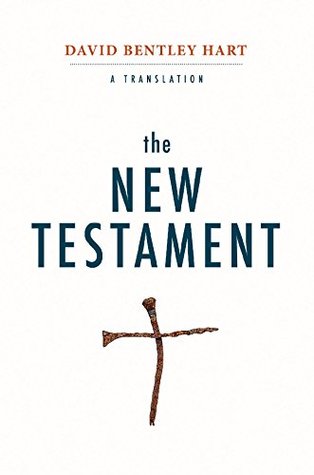More on this book
Community
Kindle Notes & Highlights
ἔθνη (ethnē),
10.
λύτρον (lytron) and ἀντίλυτρον (antilytron).
We often fail to appreciate how often the language of salvation in the New Testament employs the imagery and terminology of contemporary civil law regarding slavery.
the required fee for the emancipation of a slave, paid to the slaveholder in order to secure legal manumission.
11.
the adjective δίκαιος (dikaios), which can be translated as “just,” “right,” “righteous”; the noun δικαιοσύνη (dikaiosynē), which can be translated as “righteousness,” “justice,” “what is correct,” “what is proper,” “rectitude”; the verb δικαιόω (dikaioō), which can be translated as “make just,” “make right,” “rectify,” “correct,” or alternatively, as “prove just,” “show to be right,” “vindicate”; and all other words related to the noun δίκη (dikē), usually rendered as “justice,” “rightness,” “correct custom.”
adjectives and nouns,
as a theological term, “justification” has over the centuries acquired so many questionable connotations that it is more likely to obscure the original authors’ intentions than to reflect them.
the verb
12.
πίστις (pistis), often rendered as “faith,” and the verb πιστεύω (pistevō), often rendered as “to believe”
13.
κόσμος (kosmos),
οἰκουμένη (oikoumenē),
in Paul’s theology in particular, both slavery to death in sin and final liberation from death in divine glory are described as cosmic—not merely human—realities, taking in the whole of creation.
“cosmos,” a word that most literally means “order” or “arrangement” or even “loveliness of design.”
For the late antique cultures from which the New Testament came, the “cosmos” was quite literally a magnificently and terribly elaborate order of reality that comprehended nature (understood as a rational integrity organized by metaphysical principles),
14.
μετάνοια (metanoia),
an interior change “toward”
15.
ψυχή (psychē),
16.
πνεῦμα (pnevma),
17.
σάρξ (sarx),
18.
πορνεία (porneia), along with the related substantives πόρνη (pornē) and πόρνος (pornos).
pornē was a female prostitute
pornos a boy prostitute or hired “catamite,”
pornos is used at many junctures in biblical Greek to mean not a catamite, but rather a man who uses prostitutes of either sex;
coarser word
19.
μακάριος (makarios),
the four Gospels were given their names probably only in the second century,
logia, or “sayings,”
the third Gospel (chronologically perhaps the latest written) and the book of Acts—which together constitute almost a third of the New Testament—
among all the writers of the New Testament, none places a greater emphasis on the social and even political dimensions of the gospel:
fourth Gospel—
its principal author (there were certainly more than one)
the author was clearly more concerned with making a complex theological statement about who Christ was than with offering an ostensibly documentary history.
eschatological claims of striking exactitude that are not only found nowhere else in the Pauline corpus, but that seem almost impossible to reconcile with the eschatological language and motifs of the indubitable letters.
Paul taught nothing of the sort.
The power to perform such works is indeed a gift of grace, but for Paul it is one that unites us to God in a real “synergy” (such that we can become, as he likes to say, synergoi, “workers-together-with” God).
Paul in Romans 8 clearly describes God’s decision as contingent upon divine foreknowledge
Paul was not a Lutheran, or Calvinist, or even Augustinian.
even if Ephesians and Colossians are not works of Paul himself, they are nevertheless very much of his “school” and expand faithfully upon his theological vision.
textual evidence makes very likely, the famously dissonant passage of 1 Corinthians 14:34–35 is an interpolation).


